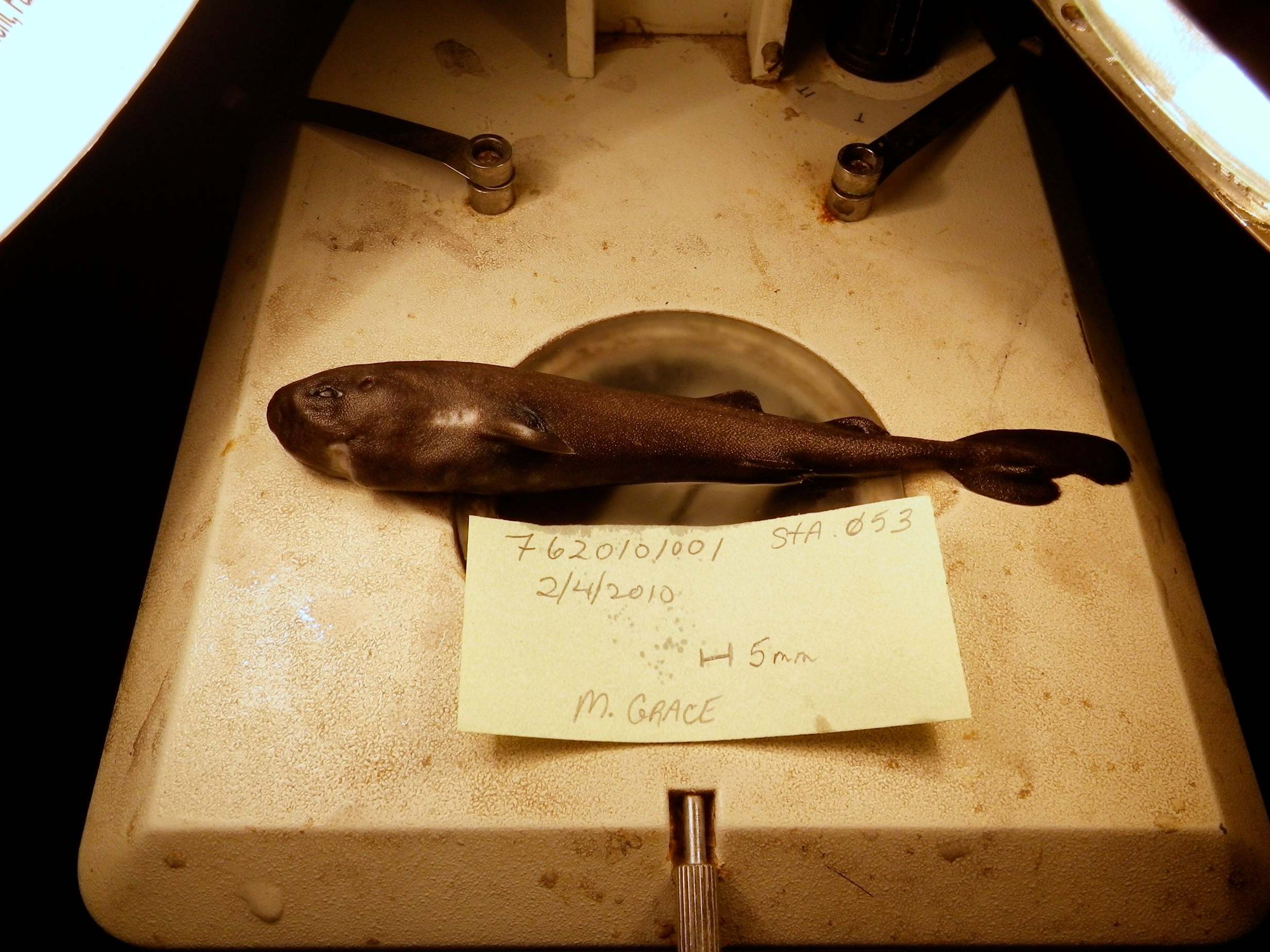Glow-in-the-dark shark species discovered by scientists
Newly identified marine animal squirts clouds of luminescent fluid from pouches near its fins

Your support helps us to tell the story
From reproductive rights to climate change to Big Tech, The Independent is on the ground when the story is developing. Whether it's investigating the financials of Elon Musk's pro-Trump PAC or producing our latest documentary, 'The A Word', which shines a light on the American women fighting for reproductive rights, we know how important it is to parse out the facts from the messaging.
At such a critical moment in US history, we need reporters on the ground. Your donation allows us to keep sending journalists to speak to both sides of the story.
The Independent is trusted by Americans across the entire political spectrum. And unlike many other quality news outlets, we choose not to lock Americans out of our reporting and analysis with paywalls. We believe quality journalism should be available to everyone, paid for by those who can afford it.
Your support makes all the difference.A new species of tiny shark which glows in the dark and squirts luminous liquid has been discovered in the Gulf of Mexico.
It is only the third species of more than 500 known shark species which is believed to secrete fluorescent liquid.
It has been named the American pocket shark, Mollisquama mississippiensis, due to its diminutive pocket-size and because of the mysterious pocket-like pouches near its front fins which it has been revealed are used to squirt little glowing clouds into the depths of the ocean.
The specimen – a 5.6-inch (14cm) newborn male shark – was collected during a 2010 survey to find out what Gulf of Mexico sperm whales eat. Scientists trawled in an area and at a depth where tagged whales had been feeding.
National Oceanic and Atmospheric Administration ichthyologist (fish scientist) Mark Grace had spent three years identifying the collected specimens, and this one, still showing an umbilical scar, was in the last bag he opened.
“I’ve been in science about 40 years... I can usually make a pretty good guess [about a marine animal’s identity]”, he said. “I couldn’t with this one.”
The only other pocket shark known to science – a 16-inch adult female caught in the Pacific Ocean off Peru in 1979 – also has a pouch next to each front fin, which scientists were unable to determine the function for. But with this one, they realised what they did.
The muscular glands are lined with pigment-covered fluorescent projections, indicating they squirt luminous liquid, Grace and his collaborators wrote in the journal Zootaxa. The shark also has clusters of light-emitting cells dotted over its stomach.
That makes it likely the one caught in 1979 and now in a Russian museum was also a light-squirter with a bioluminescent abdomen, though four decades pickled in formaldehyde have likely made it impossible to tell, Dr Grace said.
The luminescence might conceal the shark from prey or from predators, he suggested.
Differences between the two specimens include a possible pressure-sensitive organ the new species could use to detect motion hundreds of feet away and some differences in the teeth, the scientists wrote. The new species may also have as many as 10 fewer vertebrae than the other one, called Mollisquama parini.
Dr Grace said it took a while to convince himself that he had something unusual: “I figured I was doing something wrong.”
He called Tulane University scientists saying: “Look, I’ve got some really unusual deepwater stuff I want to archive in your collection, including a shark I can’t identify.”
Scientists at the American Museum of Natural History in New York and the University of Florida’s Florida Museum of Natural History also became collaborators.
A 2015 paper identified the shark as the second of its kind. It took years more, including high-resolution scans in the particle accelerator in Grenoble, France, to get more internal detail, to be sure it was a new species.
Another European expert, Julien Claes, did cellular dissection of part of the pocket tissue to confirm its function.
“He said, ‘Yes, these are the kind of cells that produce luminous fluid.’ So it’s pretty safe to say that’s what the one in Russia does,” Dr Grace said.
The collaborations were exciting, he added.
“I don’t get over it. I just remind myself this is one of the great parts of science, to have collaborations like that.”
Dean Grubbs, a Florida State University scientist and former president of the American Elasmobranch Society – scientists who study sharks, skates and rays – and who was not involved in the research, told AP: “You have this tiny little bulbous luminescent shark cruising around in the world’s oceans and we know nothing about them.
“It shows us how little we actually know.”
Additional reporting by AP
Join our commenting forum
Join thought-provoking conversations, follow other Independent readers and see their replies
Comments